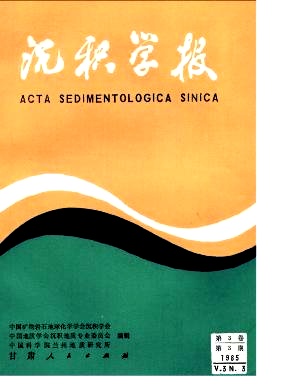MINERALOGICAL PROPERTIES OF THE QUATERNARY RED CLAYS IN TAIHE REGION, JIANGXI PROVINCE
- Received Date: 1983-09-09
- Publish Date: 1985-09-10
Abstract: The Quaternary red clays which may probably belong to respective sedimentary facies are widely dispersed in South China. The period of the Quaternary red clays has been divided in middle Pleistocene ( Q 2 ) . They are charecterized by red color, clayey texture, mottling in the bottom layer and boulder in the lower part. According to the geomorphology, the genesis and origin of materials, the Quaternary red clay sediments in the Taihe region,Jiangxi Province, may be divided into two types; one ( profile 1 , 2 ) is dark red material of residual and slope deposits of early middle Pleistocene which sedimented earlierj the other ( profile 3,4) is light red alluvial material,which sedimented later, Both of them have undergone-a soil-forming process since middle Pleistocene until now. It can be seen from the composition of heavy minerals in-the 10-50 μm fractions that the dark red clay sediments contain 7 -10% hornblende and 17-20% tourmaline, while the contents of the two minerals in light red ones are 17-22% and 9-14% respectively. It can also be seen from the composition of the minerals of the2μm fractions that the dark red sediments have little more kaolinite and free iron oxides, less 14λ transitional minerals and noncrystalline materials than the light red ones.The activity of free iron oxide, the dispersity and specific surface area are greater in 'light red sediments than those in dark red ones. The X-ray diffraction patterns of the clay particles in mottling layer ofter the treatment of removing iron indicate that the mineral composition in mottling layer ( 2μ) is similar to the soil in the upper layer and that the difference in the colour of the mottles only reflects the various contents of free iron oxide. According to the study of mineralogy, there is a difference in the degree of weathering and soil forming between the two sediments of Quaternary red clays,the weathering degree of dark red sediments is greater than that in the other. The red clay must be compared with the soils which were developed from igneous rock, when a thorough investigation is made,
| Citation: | Jiang Meiying. MINERALOGICAL PROPERTIES OF THE QUATERNARY RED CLAYS IN TAIHE REGION, JIANGXI PROVINCE[J]. Acta Sedimentologica Sinica, 1985, 3(3): 95-104. |






 DownLoad:
DownLoad: